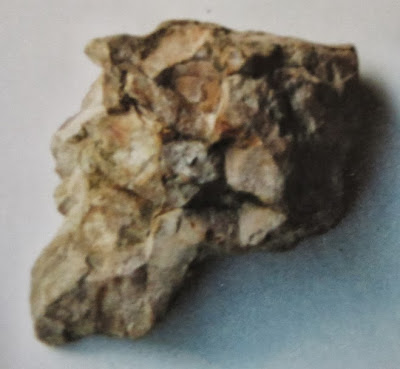Ken Johnston find, Licking County, Ohio, 8cm,11cm
"Human head profile with pink lips looking left"
Flint Ridge, Ohio, has been demonstrated on this blog to be the locus of significant iconographic sculpture and figure stone production. The state archaeologist attributes these items to my cloud-watching. While the museum in Columbus spends significant time on an Egyptian mummy, the "world heritage class" portable rock art enterprise at Flint Ridge continues to be ignored. Unlike most scientific endeavors, Archaeology seems to have no mechanism or interest in anomalous material which it cannot explain other than "you have pareidolia."
Perhaps this exquisitely beautiful art piece will prompt someone in Archaeology to begin the process of scientifically assessing this kind of material and the potential of finding it in situ in dated context. A multi-disciplinary team is needed which is committed to a fair examination of the suspect material and which understands pareidolia is a part of the universal human experience, not an argument.
And if archaeologists continue to ignore the need to sample even the most obscure lithic material at their sites for visual or iconic properties like those presented by many amateurs on this blog, they will continue to destroy their sites and the invaluable art information which was recorded on stone.
The human depiction here appears to be of a "robust type person" with a prominent brow ridge and mid-facial prominence, as opposed to a "gracile type person" (Bednarik) with more of a flat face and forward chin. For background on these human types which informs the study of potentially Pleistocene art objects, please see Bednarik, The Origins of Human Modernity, at the bottom of the Archaeology of Portable Rock Art main page.
This is the sculpture rotated 90 degrees to the right for comparison to a French example below
From portable rock sculpture author Pietro Gaietto, Genoa, Italy
attributed to the middle-Acheulean, from central France
This is a shadow view of the sculpture from Licking County, Ohio






.jpeg)













eBPu+TzC6jg~~60_57.JPG)
eBPu+TzC6jg~~60_57+markup.jpg)

.jpg)

























